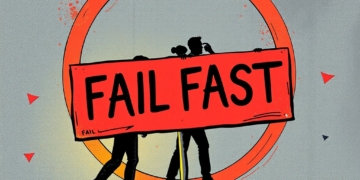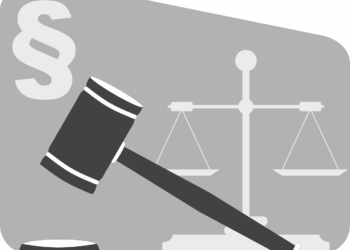- Honesty in marketing is both legally and ethically important for start-ups.
- Misleading advertising is prohibited under the UWG; information must be truthful and clear.
- Transparency in influencer marketing is mandatory; labeling as advertising is required if there are benefits in return.
- Greenwashing and exaggerated advertising promises damage trust and brand reputation in the long term.
- As a strategic partner, a lawyer can support start-ups with compliance and creative marketing strategies.
- Authenticity and transparency promote customer loyalty and increase economic success.
- Startups should pay attention to the special protection needs of children in advertising.
Start-ups are often faced with the tension between presenting themselves attractively and communicating honestly and in compliance with the law. How much honesty is legally required and ethically appropriate? This comprehensive article analyzes the legal basis (UWG and current case law) and sheds light on the ethical dimension of transparency in marketing. Particular attention is paid to influencer marketing, advertising to children, the economic impact of authenticity and strategies for minimizing risk. Finally, the role of the lawyer as a strategic partner in startup marketing is reflected upon. The aim is to highlight best practices for legally sound and effective communication strategies – a guide for start-ups that want to successfully harmonize competition law, marketing and influencer cooperations.
Legal basis: How honest must advertising be according to the UWG?
Obligations under advertising law: In Germany, misleading or untrue advertising statements are prohibited under the Unfair Competition Act(UWG). § Section 3 UWG contains the general clause according to which unfair business practices are prohibited. This is substantiated by Section 5 UWG: advertising is misleading if it contains untrue statements or makes other misleading statements about material circumstances. In this context, “statements” include all objectively verifiable factual claims – as opposed to subjective value judgments or recognizable exaggerations. Advertising exaggerations (so-called puffery) such as “the best coffee in the world” are considered statements of opinion and do not fall under the prohibition of misleading statements as long as an average consumer does not take them literally. However, as soon as concrete, verifiable information – such as prices, test results, product characteristics – is mentioned, it must be truthful so that consumers are not misled.
Average consumer as a benchmark: Whether a statement is misleading is assessed from the perspective of the average informed and reasonable consumer who pays appropriate attention to the advertising. The decisive factor is whether a significant proportion of the target group is misled by the advertising, which influences their purchasing decision. This depends on the circumstances of the individual case; there are no fixed percentages, but the assessment is based on what a significant proportion of consumers understand. In practice, this means Advertising claims must be clear and unambiguous. If important information is missing or presented in a misleading way, the claim may already be misleading.
Embellished advertising vs. misleading: Startups tend to present their product in the best possible light – “embellished advertising” is common and permissible to a certain extent. Flowery formulations or emotional appeals are allowed as long as they do not claim false facts. Example: The slogan “Better to look better than pay a lot” was classified by the BGH as a permissible advertising slogan. However, it becomes inadmissible if advertising statements give the public a false impression of objective characteristics. An advertisement must be objectively accurate in its factual claims. Companies may differ in tone and style, but false information or significant omissions are legally taboo.
§§ Sections 3, 5 UWG at a glance: In summary, this means that according to Section 5 (1) UWG, anyone who carries out a misleading commercial act that is likely to induce the consumer to make a decision that they would not otherwise have made is acting unfairly. This includes false information about, for example, product features, price, purpose, test results, awards or the size of the company (such as fictitious “market leadership”) (. It is also prohibited to communicate true facts so incompletely or ambiguously that the public is left with a false overall impression (misleading by omission or concealment, regulated in Section 5a UWG). Startups must therefore check every advertising statement: Does what is said correspond to the facts and does the average customer have all the necessary information to avoid being misled?
Practical example – test results: An illustrative example is provided by a BGH ruling against the DIY chain Obi. In a brochure, Obi had depicted a paint bucket with a small “test winner” logo, but without any further details about the test source. The BGH considered this to be essential information that was withheld from the consumer – namely where and when the test took place. Consumers want to be able to understand test results, for example by means of the issue and year of the test magazine. If this information is missing, this constitutes misleading by omission in accordance with Section 5a (2) UWG. Obi was ordered to refrain from such advertising. Lesson for start-ups: Anyone advertising with seals, awards or studies must be transparent about what these refer to and where details can be found – even if the seal is only small in the picture. Otherwise there is a risk of legal action from competitors.
Obi advertised with a “test winner” seal without stating the source – the BGH classified this as misleading. Such cases show that even omissions (in this case missing test details) can make advertising inadmissible.
§ Section 5a (6) UWG: Identification of the commercial purpose: In addition to the general prohibition of misleading advertising, the UWG contains a special provision on the transparency of the commercial nature of advertising. § Section 5a (6) UWG (old version, now Section 5a (4) new version) states that commercial activities are unfair if their advertising purpose is concealed, unless it is clear from the circumstances. In practical terms, this means that surreptitious advertising – i.e. advertising that is not recognizable as such – is prohibited. This includes, for example, when editorial content or social media posts are used for advertising purposes without the advertising character being clear. This topic is particularly relevant in the influencer sector (more on this later). Important: The commercial purpose does not have to be marked if it is obvious anyway. In the case of well-known influencers, for example, it may already be clear to everyone that product presentations also constitute self-promotion. Further labeling is then unnecessary. However, in cases of doubt – especially if there is a quid pro quo – it must clearly state “advertising” so as not to mislead consumers.
Current changes to the law: The legal situation in this regard has been clarified by judgments of the Federal Court of Justice (Sept. 2021 and Jan. 2022) and an amendment to the UWG. Section 5a (4) UWG (new version) now expressly clarifies that a consideration from the advertised company to the advertiser is a criterion for the labeling obligation. The UWG has thus been aligned with the requirements of media law, according to which advertising in telemedia, for example, generally requires a consideration under the Interstate Media Treaty. For start-ups, this means Native advertising, influencer posts or other advertising campaigns must be transparent as soon as a cooperation or payment is somehow involved. Otherwise, you run the risk of being warned for disguised advertising (Section 5a UWG).
Warning practice and consequences: The Wettbewerbszentrale and competitors keep a close eye on such infringements. In the German system, competitors or consumer protection associations can take action against misleading advertising with warning letters. If an advertising statement proves to be unfair, there is a risk of claims for injunctive relief and removal as well as compensation for warning costs. If it comes to a legal dispute, start-ups must expect injunctions or lawsuits, which, in addition to legal fees and court costs, also entail considerable reputational damage (more on this later). In serious cases, misleading statements can even be relevant under criminal law – Section 16 UWG, for example, criminalizes the misrepresentation of false business circumstances under certain circumstances, which can result in fines or imprisonment. Although criminal proceedings are rare, the existence of these standards underlines the importance of truthful advertising.
Further examples of misleading advertising: Numerous rulings illustrate where courts draw the line. In 2024, for example, the Federal Court of Justice ruled that the blanket claim “climate neutral” for a product can be misleading if the company merely offsets CO₂ instead of actually producing without emissions. In the case of a confectionery manufacturer, the information was only hidden on a website – however, the BGH demanded that it be made clear in the advertising itself what “climate neutral” means. Because consumers place particular faith in environmental promises, there is an increased obligation to provide information about their specific content. The company had to stop advertising. This example shows: Greenwashing (unsubstantiated sustainability claims) is a hot potato – anyone advertising with climate slogans must be able to substantiate them, otherwise there is a risk of warnings.
Price advertising also offers pitfalls: Bait-and-switch offers with unrealistically low prices without sufficient inventory, or discount statements without a clear reference (“now 50% cheaper” – but from what?) have been prohibited by courts. Even supposed secondary details count: for example, the total offer must be clear in the case of “from” prices or monthly installments so that customers are not misled. Overall, the principle is: truth and clarity. Everything that an average customer would consider relevant for their purchase decision must not be distorted or omitted.
In summary, start-ups are well advised to critically review their advertising claims. Creative exaggeration is permitted – but deception is not. The legal requirements of the UWG thus form a framework that ensures that competition is based on performance and not on the loudest but false promises. In the next section, we look at why the ethical dimension of honesty in marketing is becoming increasingly important in addition to legality.
Ethical dimension: Changing values, customer expectations and the limits of deception
Legal requirements are the minimum – but honesty in marketing is also an ethical issue. In recent years, a shift in social values has become apparent: consumers, especially younger generations, are placing increasing value on authenticity, transparency and corporate responsibility. Start-ups that only shine on the surface risk a loss of trust as soon as customers can see behind the façade. Conversely, honesty pays off, as it creates credibility and long-term customer loyalty.
Changing social values: Consumers used to accept glossy advertising and perfect staging as normal, but today such staging is often viewed critically. Terms such as “corporate social responsibility” (CSR) and “purpose-driven marketing” have become mainstream. Studies show that consumers prefer brands whose values are in line with their own. According to a 2025 survey, 59% of respondents are more likely to trust brands that live their values authentically, and 56% trust companies even more than influencers or celebrities. Authenticity is a key buzzword: consumers want to see real behind-the-scenes insights, unadulterated stories and also the admission of challenges. In other words, “radical honesty” is becoming a success factor in marketing. Companies that communicate openly – even about imperfections – differentiate themselves positively from those that still only maintain a flawless world of appearances.
Corporate responsibility and trust: At the same time, customers increasingly expect companies to act ethically – not just in terms of legal compliance, but beyond that. Greenwashing scandals or broken promises (e.g. regarding working conditions or sustainability) are immediately denounced on social media. The public reacts sensitively to dishonesty. The change in values means that there are now stronger sanctions when companies abuse trust. Conversely, consumers reward honest behavior: Being open about mistakes or criticism can actually increase credibility because it shows human greatness. One example is the attitude of some tech start-ups that disclose their product roadmaps and make transparent what works and what doesn’t – this culture of transparency creates a community of advocates who value such honesty.
Risks of disappointed customer expectations: Exaggerated advertising promises can bring attention and sales in the short term, but they harbor considerable risks in the long term. If customers find that a product or service does not meet their expectations, they feel deceived. Such disappointed customer expectations not only lead to one-off displeasure, but can also cause lasting damage: Dissatisfied customers turn their backs on the startup and may express their frustration publicly – be it through negative reviews, on social media or among acquaintances. In times when online reviews and word of mouth are hugely influential, disappointment can quickly multiply.
A recent survey shows that 40% of US consumers have already broken off a business relationship with a company because it used misleading marketing. Worldwide, the average is one third of consumers. In addition, 32% globally (and 29% in the US) would warn friends and family about a company that uses deceptive marketing. These figures make it clear: consumers actively “punish” dishonest marketing by switching away and informing others about it.
Reputational damage should not be underestimated either. A startup that attracts attention through deception scandals loses brand value – something that is particularly difficult for young companies to rebuild. In the digital age, a misstep often remains in the public eye for a long time; search engines and social media memes do not forget so quickly. Example: The case of Juicero – a highly financed start-up that advertised an expensive “smart juicer” – became a laughing stock when it emerged that the juice bag could be squeezed just as well by hand. The initial hype advertising turned into the opposite; customers felt they had been taken for a ride, the media mocked, investors bailed out – in the end, Juicero had to cease operations after just 16 months. Although legal misrepresentation was not necessarily the decisive factor here, the discrepancy between marketing and reality completely ruined trust. This example shows the power of disappointed expectations and public malice in the start-up world.
Ethics: Where is the line? The gray area between image cultivation and deliberate deception is ethically relevant. Of course, marketing can arouse positive feelings and shape an image – that’s part of the business. However, ethical boundaries are reached when marketing becomes manipulative, i.e. when it knowingly creates misconceptions. Experts emphasize that long-term customer relationships are based on honesty: Only those who deliver what they promise will gain loyal followers. The damage caused by lies or concealment is often disproportionate to the short-term benefit. Brand research studies show that trust is a key driver of customer loyalty. Lost trust is very difficult to win back – so there is an ethical imperative not to squander it in the first place.
Ethical start-ups therefore try to make openness part of their culture: they communicate proactively, clear up misunderstandings and avoid exaggerated superlatives that they cannot back up. An often quoted principle is: “Under promise, over deliver” – it is better to promise a little less and then exceed expectations than the other way around. In this way, ethics builds a bridge to economics: honesty and realistic communication lead to more satisfied customers, while deception may generate one-off sales but destroys the basis for recurring purchases.
Experts and studies support this view. The Influencer Trust Report 2023 found that transparency and honesty were cited by 63% as the most important reason why people trust certain influencers. Conversely, 43% of respondents avoid influencers (or brands) if they perceive a lack of transparency. Applied to start-ups: those who communicate honestly are more likely to enjoy the trust of their customers; those who cheat are avoided. It is therefore ethical to pursue an open communication strategy that does not conceal anything important.
Interim conclusion: The social trend is clearly moving towards more honesty in business life. Start-ups that anticipate this trend can differentiate themselves positively. It is not enough to just meet the requirements legally – integrity and transparency are increasingly becoming a competitive advantage. In the next step, we look specifically at influencer marketing, where the interface between law and ethics is particularly visible.
Influencer marketing: transparency obligations, cases and consequences for credibility
Influencers as brand ambassadors: In the digital age, many start-ups rely on influencers to present their products authentically in a social environment. Influencer marketing has quickly developed from a trend that was ridiculed to a central form of advertising. The idea behind it: Influencers show products on Instagram, TikTok & Co “just like in real life”, often with personal recommendations. Ideally, this comes across as friendly advice instead of traditional advertising. However, this is precisely where the danger of concealment lies: followers should often not even realize that it is advertising – which is not permitted by law. In addition, younger fans in particular are not always able to distinguish whether a post is made on their own initiative or against payment.
Legal requirements (Section 5a (6) UWG and labeling): As already mentioned, the UWG stipulates transparency. Advertising must be recognizable as such. According to Section 5a (6) UWG (old version), anyone who fails to disclose the commercial purpose of a commercial activity is acting unfairly, unless it is already obvious and the lack of labeling is likely to influence the consumer’s decision. In relation to influencers, this means that as soon as a post serves the sales of a company (third-party advertising) and the advertising purpose is not crystal clear, a label such as “#Advertising” or “Advertisement” is mandatory. In addition, the German Interstate Media Treaty (MStV) and the German Telemedia Act (TMG) also require a separation of editorial content and advertising – however, these media law standards link the concept of advertising to a consideration.
Case law in recent years has sharpened the criteria. In September 2021, the BGH decided the following in three landmark cases (“Influencer I and II”):
- If an influencer posts a product she has purchased herself and links to the manufacturer (tap tag) without being paid for it, this does not necessarily have to be labeled as advertising – if the commercial purpose is immediately apparent from the circumstances. In the specific case (including Cathy Hummels), the BGH found that in the case of a very well-known influencer with hundreds of thousands of followers, it is clear to everyone that she is also posting for self-promotion. This is so-called self-promotion, which was obvious. Labeling as advertising was therefore unnecessary.
- However, as soon as a fee or consideration is involved, the labeling obligation applies in full. Influencer III: In January 2022, the Federal Court of Justice also ruled that making products available free of charge also constitutes a “similar consideration”. Influencers who receive goods or services free of charge and post about them must label this commercial content. It is therefore not enough that no money flows – benefits in kind or other advantages (e.g. invitations to events, free trips) also count as consideration within the meaning of the law. The definition of “advertising” in the Interstate Media Treaty (which is based on remuneration) has been interpreted in the same way as the UWG.
- As a result, this means that any promotion of third-party companies on an influencer’s account is subject to labeling as soon as there is any cooperation. Only genuine, uninfluenced expressions of opinion without any remuneration can remain without a label – provided that the influencer is not already so well-known that the advertising character is clear anyway.
This line has also been confirmed in court rulings. In May 2022, the Higher Regional Court of Frankfurt ruled that linking to a company via a tap tag must be labeled as advertising as soon as a product has been provided free of charge. In the Frankfurt case, an influencer (500k followers) had linked to an e-book package that she had received free of charge – without labeling. The Higher Regional Court saw this as a “prototypical case of excess advertising”: the influencer promoted the third-party product (high discount, no discussion of content), which benefited both the provider and her own brand. Because the average user could only see that she was promoting herself, but not that the e-book provider was also benefiting, there was concealment. Result: Unfair surreptitious advertising pursuant to Section 5a (6) UWG . The posts had to be marked as advertising.
Labeling best practices: For start-ups and their influencer collaborations, this means in practical terms: transparency is mandatory. Posts that contain advertising should be clearly and immediately marked as such – ideally at the beginning of the post with words such as “Werbung” or “Anzeige” (hashtags such as #ad are usually not sufficient in Germany if the post is in German). There must be no doubt for the consumer as to whether it is an authentic tip or marketing. Even phrases such as “in cooperation with [Marke]” are useful to create clarity. The state media authorities have issued guidelines recommending that it is better to label too much than too little. Although BGH case law has defined a certain framework (no obligation to label obviously self-promotional posts without consideration), this exception will rarely apply – namely only in the case of very well-known influencers, where every post is seen as part of their “brand” anyway. For typical collaborations of a startup (e.g. micro-influencers, product sponsoring), labeling is always required to be on the safe side.
Cases and warnings: In the years 2017-2020, there was a veritable wave of warning letters against influencers in Germany, initiated by competition associations. Well-known names such as Vreni Frost, Cathy Hummels, Pamela Reif and others found themselves in court. Initially, various courts handed down contradictory rulings, which led to considerable uncertainty. Some lower courts held that even unpaid posts with brand links were subject to labeling, while others assumed that where there was no payment, there was no advertising. The 2021/2022 BGH rulings have largely removed this uncertainty and provided a clear line. Nevertheless, influencer marketing remains a sensitive area: hardly any other area of marketing has been subject to such intensive legal monitoring in recent times. Start-ups should know that infringements in this area will be taken up very quickly. As recently as 2023, for example, a warning campaign by the Wettbewerbszentrale against a number of smaller influencers due to a lack of labeling caused a stir (even if some of the warnings were found to be unjustified under the new legal rules, it still shows the danger of constant monitoring).
Consequences for credibility and brand loyalty: Beyond legal obligations, credibility plays a huge role in influencer marketing. Influencers live from the trust of their followers – and this trust is based on authenticity. If followers get the feeling that an influencer is sneakily advertising and “secretly trying to sell them something”, this can severely damage the relationship. The community then feels exploited instead of authentically inspired. And this affects the advertised brand: The products appear dubious if they are only advertised through trickery.
Conversely, transparent advertising can even be received positively as long as the influencer remains credible. Many successful influencers today openly label themselves as “advertising” and make an effort to only present products that they actually stand behind. Studies show that consumers are quite accepting of influencers earning money – as long as they label honestly and remain authentic. As mentioned above, 63% of people cite honesty/transparency as the main reason for trusting influencers. And 79% trust social media influencers in general if they are perceived as authentic. If influencers lose their credibility, the startup also loses the value of this cooperation: the advertising messages then fizzle out or turn negative.
One example: in 2019, some YouTubers were criticized for secretly including paid product recommendations in seemingly private videos. Fan reactions were extremely negative when this came to light – there were shitstorms and apology videos. The brands in question also got their comeuppance in the comments. This episode shows that a lack of transparency is not only legally risky, but also strategically stupid because it destroys the most important asset – trust.
Strategies for start-ups in influencer marketing: How can you work with influencers in a legally compliant and credible way? A few best practices:
- Clear agreements in advance: Startups should contractually stipulate that influencers are obliged to comply with labeling obligations. Good influencers are aware of this and cooperate here. Don’t put the responsibility solely on the influencer – as the client, the company is also at risk if surreptitious advertising occurs.
- Select suitable influencers: Choose influencers who are an authentic fit for the product and whose follower structure belongs to the target group. A credible fit reduces the risk of advertising being perceived as annoying. In addition, such influencers are less likely to use questionable methods as they do not want to disappoint their audience.
- Communicate transparency openly: It can even have a positive effect if the influencer openly says: “This product was provided to me by Startup X – and I’m showing it to you because it really convinced me.” Such sentences take the wind out of the sails of critics and increase the credibility of the recommendation if it is honest.
- Offer added value: Influencer content should ideally do more than just clumsy advertising – e.g. application tips, entertainment, personal stories about the product. This makes the post feel worthwhile for followers despite the “ad” notice. An honest review culture, where pros and cons are also mentioned, can increase authenticity and is ethically exemplary.
- Monitoring and feedback: Startups should keep an eye on how the community reacts. Feedback from fans (comments, likes, etc.) provides an indication of whether the cooperation is being well received or whether it may be straining trust. If necessary, you can make adjustments or learn from bad experiences.
The bottom line is that influencer marketing can be a powerful tool – but only if it is designed with trust. Legal transparency obligations and ethical authenticity go hand in hand here. If both are taken to heart, influencer advertising strengthens brand loyalty enormously: followers can become loyal customers and ambassadors. However, gambling away their trust damages both the influencer and the brand.
After this excursion into the realm of social media, we turn our attention to another sensitive target group: children and young people. How much honesty and protection is required for advertising aimed at them?
Advertising to specific target groups: protection of children and young people
Children and young people enjoy special protection under competition law. They are considered to be particularly impressionable and inexperienced, which is why advertising aimed at minors is subject to strict requirements. Start-ups with products for young target groups (such as games, apps, toys) must be aware of these particularities and take them into account. This is where unfair competition law (UWG) meets youth protection regulations – both aim to prevent the inexperience of children from being exploited.
General protection in the UWG: Section 3 UWG i.V.m. § Section 5 (3) UWG and in particular Section 4a UWG contain provisions for addressing children as consumers. § Section 4a (2) UWG stipulates that a commercial act is unfair if it is likely to exploit the inexperience or credulity of children or young people. This means that advertising may not misuse children’s age for advertising purposes. In practice, the question must be asked whether the advertising measure is specifically tailored to children and whether it awakens misconceptions or inappropriate incentives to buy in the average child. If this is the case, even something that would be okay for adults may be unfair to children.
Standard “average child”: Unlike usual (average consumer), this is based on the horizon of a child. For example, a child cannot assess price information or contract terms in the same way as an adult. It follows from this: Advertising must offer additional clarity if it (also) addresses children. Information that an adult understands intuitively may have to be simplified or supplemented for children so that they are not misled.
Examples from case law: The Federal Court of Justice objected to an advertisement for cell phone ringtones in a youth magazine. It advertised a price of “X cents per minute” without specifying how long the download would take. This meant that young people were unable to estimate the total cost of the ringtone – a typical exploitation of inexperience. The BGH demanded that either the approximate download duration or the total price be stated in order to provide clarity. Another example: Collecting personal data from children for advertising purposes (e.g. a competition in which children give their name and address, which is then used for advertising) is considered unfair because children do not understand the consequences of passing on their data.
Direct appeals to children to buy (Blacklist No. 28): Directly asking children to buy something or asking adults to buy something is particularly strictly prohibited. This practice is expressly listed as always prohibited in No. 28 of the Annex to Section 3 (3) UWG (the so-called “blacklist” of unfair acts). Specifically: Advertising may not say “Buy now…” or “Ask your parents to buy you … to buy” if it is aimed at children under 14. Examples would be TV commercials on children’s channels that directly address children with “Get…” – this is prohibited. However, more general formulations that do not come across as a personal imperative or, for example, the possibility of children writing a wish list (this is still considered okay indirectly) are permitted. The limit therefore lies in the directness and personal nature of the request.
In-game advertising and current debates (Star Stable): Digitalization has given rise to new forms of advertising aimed at children, for example in online games. One recent case is Star Stable Online, a horse game that appeals to young girls in particular. Consumer advocates have criticized the game’s aggressive appeals to children to buy virtual currencies and items. For example, there are time-limited offers (“Strike now!”) and constant reminders to buy more Star Coins – mechanisms that can easily trigger impulsive purchases in children. The European consumer authorities, coordinated by the EU Commission, initiated measures against the provider in 2023. One of the complaints was that children were not made aware of the costs clearly enough: Prices are displayed in a game currency without making the real monetary value clear. Children could thus spend much more money than intended because the reference is lost. The authorities are calling for more transparency – such as always displaying the amount in euros – and an end to misleading pressure tactics such as artificial scarcity for minors. This case shows that youth marketing in the digital world is a hot potato. What is disguised as a game, but in fact exerts psychological sales pressure on children, violates fair competition and consumer law.
Example of in-app purchases for a child-specific online game: prices in game currency only. Consumer advocates complain that this conceals the real costs from children. Legally, more transparency is required here to protect young players.
Start-ups in the games or toy sector should keep a close eye on these developments. Loot boxes and other gambling-like sales models are also subject to criticism if they are aimed at young people. In addition to UWG violations, there is also the threat of violations of the Interstate Treaty on the Protection of Minors in the Media (JMStV) or gambling law.
Advertising with children: A related topic is advertising with children (i.e. children as actors in advertising). This is generally permitted, but must also be measured against whether it exploits children’s light-heartedness. The topics often overlap: If children rave excessively in a commercial (“This yoghurt is soooo delicious, I want it every day”), the advertising is indirectly aimed at other children as an audience. Therefore, such advertising must ultimately also be measured against the above-mentioned standards.
Youth protection laws: In addition to the UWG, there are special laws. The JMStV (Interstate Treaty on the Protection of Minors in the Media), for example, prohibits certain product advertising in offers that are accessible to children (e.g. alcohol, tobacco in online games, etc.). Time limits for TV advertising in children’s programs or bans on teleshopping for children are also included. These regulations are relevant for start-ups if they offer content for children. In children’s apps, for example, it must be ensured that no development-impairing advertising is shown. Advice from youth protection experts is worthwhile here in order to avoid fines.
Conclusion for children’s advertising: The ethical duty of honesty is particularly high here, as children are even less able to critically scrutinize advertising. In the long term, it also harms the brand if it upsets parents (e.g. through hidden costs incurred by children). A responsible marketing approach therefore focuses on transparency and fairness: clear price information, no manipulative tricks, an age-appropriate approach. This not only avoids legal problems, but also gains the trust of parents – and ultimately of young customers, who, as the next generation of consumers, will develop brand loyalty or rejection depending on how they are treated.
Economic aspects: Authenticity as a success factor and competitive advantages through transparency
In addition to legal and ethical considerations, there are also solid economic reasons for honesty in startup marketing. Authenticity and transparency significantly influence brand perception – and therefore purchasing decisions, customer loyalty and ultimately financial success. In this section, we look at the positive effects honest marketing can have and how startups can gain a competitive edge as a result.
Positive effects of authenticity: Authentic marketing means that the brand appears credible and coherent. Customers sense when a company “means business” and is not just spouting empty phrases. According to a Nielsen survey, 73% of consumers are more likely to choose a product if it is presented completely and honestly. Authenticity therefore creates trust in the quality and benefits of the offer. This trust in turn lowers the inhibition threshold for purchasing and increases satisfaction after the purchase because expectations were more realistic.
Studies also show that brands with a high trust value are more profitable in the long term. According to McKinsey, for example, value-oriented brands clearly outperform the market. Every year, the Edelman Trust Barometer shows the connection between trust and loyalty: 61% of consumers surveyed would try out new products from a brand if they trusted it, while only 14% would do so if they did not trust it (figures for example). Trust depends heavily on the truthfulness of communication – those who keep their promises score points.
Brand loyalty and customer retention: Honest communication contributes to a stronger emotional bond with customers. Customers feel respected when they are not taken for fools. They reward this with loyalty. A survey from 2024 found that almost two thirds of customers would switch companies if their communication was unsatisfactory. Conversely, customers are happy to stay if communication is clear, transparent and at eye level. According to the study, younger generations in particular (Gen Z, millennials) are even more consistent: over 70% would leave a company due to poor communication (including dishonesty). Good, open communication, on the other hand, acts like a glue that retains customers. In addition, satisfied customers are more likely to actively recommend a brand to others (viral effects, word of mouth). In times of social media, this organic promotion is worth its weight in gold.
Competitive advantages through transparency: Transparency can also be a competitive differentiator. In saturated markets with many interchangeable offers, consumers are looking for trustworthy points of reference. A start-up that, for example, discloses its supply chain, talks honestly about its cost structure or deals openly with customer feedback can set itself apart from the competition. One example is the cosmetics brand Lush: in “How it’s made” videos, it openly shows how its products are handmade by employees. This makes the products appear more transparent and the company more approachable – which creates customer loyalty. Other companies communicate their values proactively instead of just products: Starbucks UK, for example, did a campaign to support transgender youth (commercial “What’s your name”), which generated a hugely positive response – customers feel the values and stay connected to the brand, even if the coffee might be cheaper elsewhere. Value-based marketing that is honest and consistent thus creates loyalty beyond short-term price or convenience aspects.
Successful strategies that convince: Numerous marketing campaigns show that creative marketing and honesty are not contradictory. On the contrary, some of the most successful campaigns were based precisely on showing the truth:
- “Moldy Whopper” from Burger King (2020): Instead of presenting the burger as appetizingly perfect, the campaign showed a Whopper that went moldy after weeks – as proof that it was free of artificial preservatives. This ruthless transparency caused an enormous stir and received praise because it authentically communicated a genuine concern (the naturalness of the ingredients). Burger King thus underlined its credibility in comparison to competitors with beautiful but retouched images. Sales figures for the advertised product line subsequently increased significantly (according to internal reports).
- Patagonia: “Don’t buy this jacket” (2011): The outdoor brand placed an ad around Black Friday time calling on people not to buy its own bestseller – explaining its environmental impact and appealing for more conscious consumption. This radically honest approach – essentially anti-advertising – reinforced Patagonia’s image as a sustainable, trustworthy company. Many customers bought Patagonia products precisely because of this honesty and the brand’s reputation grew immensely. To this day, Patagonia has very loyal customers who share its values.
- Start-ups with an open product backlog: There are cases in the software scene where young companies make public which errors (bugs) still exist and what they are working on. Instead of feigning perfection, they say: “Yes, feature X is still missing, but we’ll develop it by next quarter.” Customers appreciate this openness and are more likely to remain loyal than if they feel deceived.
Economic damage caused by dishonesty: For the sake of completeness, it should be mentioned that dishonesty not only leads to a loss of trust, but can also cause concrete costs: Reversals, claims for damages, higher marketing costs to win back disappointed customers, share price losses for listed companies following PR scandals, etc. For a young start-up, even a wave of cancellations or returns (e.g. because a product does not keep its promises) can threaten its existence. These “hidden costs” of poor marketing underline the fact that honesty is also the more sustainable strategy from a business perspective.
Competition law compliance as a sales argument: Interestingly, compliance with advertising law can itself become a marketing argument. For example, some companies advertise that they are particularly transparent (e.g. “100% honest content information” or “No tricks in our tariffs”). As long as this does not remain an empty promise, it can create trust even before the customer has tried the product. In a market where consumers are often latently suspicious (e.g. mobile phone contracts, energy contracts), a provider that positions itself as an honest alternative can win over customers who have had enough of bait-and-switch offers and small print.
In summary, authenticity and transparency offer the following economic advantages:
- Higher conversion: Trustworthy product information makes the purchase decision easier.
- Fewer returns/complaints: Realistic expectations lead to more satisfied customers.
- Regular customer effect: Trust leads to repeat purchases and subscriptions.
- Word of mouth: Satisfied customers actively recommend the brand to others – free marketing.
- Brand value: A brand known to be honest has a more stable value and can enforce price premiums.
- Risk minimization: Less danger of expensive crises, recalls, shitstorms – which indirectly saves costs and keeps the focus on the core business.
A start-up that declares transparency as its maxim is thus investing in its own future viability. It builds a community that is not just buyers, but sometimes fans and defenders of the brand. This is an immense advantage over competitors who may acquire customers quickly but lose them just as quickly because promises turn out to be hollow.
Risk minimization strategies: creative and legally compliant marketing in practice
So how can start-ups engage in creative marketing without crossing legal boundaries or violating ethical principles? This section deals with best practices and concrete strategies for implementing marketing ideas in a way that is both effective and legally compliant. The aim is to achieve maximum advertising impact without risking warnings – and at the same time to be credible with customers.
Internal compliance processes: A key success factor is to integrate a compliance check into the marketing process at an early stage. This means that before a campaign goes live, it should be checked from a legal perspective (e.g. by a lawyer or using an internal checklist). The larger, riskier or more innovative the campaign, the more worthwhile it is to obtain legal approval. A rule of thumb: caution is advised with any advertising statement that you cannot immediately prove beyond doubt yourself or that could be misunderstood. Here are some points that should be on the checklist:
- Truthfulness of all statements – is evidence available (tests, studies, certificates)? Are superlatives verifiable or recognizable as opinions?
- Price information – complete and including all mandatory surcharges? (Keyword PAngV – Price Indication Ordinance).
- Labeling requirements – for discount campaigns, competitions, influencer posts, affiliate links, etc.: Is it made transparent everywhere what it is about?
- Copyright and personal rights – use of images, texts, quotes from third parties is permitted and labeled? (Not competition law, but frequent grounds for warnings).
- Target group suitability – if special groups are addressed (children, senior citizens, medical laypersons), is the approach understandable and appropriate for them?
It is advisable to create clear internal guidelines for marketing messages that cover such points. If everyone in the team knows what to look out for, the error rate decreases. These guidelines must be kept up to date to reflect changes in legislation and case law.
Creativity vs. legality – finding solutions: Creative marketing often means breaking new ground, sometimes being provocative or surprising. It is important that the creative team and the legal advisors work together instead of seeing each other as opponents. A good lawyer should not be a “killjoy”, but should help to shape a creative idea so that it becomes legally sound without losing its essence. Sometimes a small adjustment is enough: a more descriptive text, a change in the choice of words, obtaining permission for a guerrilla action from the city, etc.
Guerrilla marketing example: Let’s assume a startup is planning an eye-catching guerrilla campaign in a public space (e.g. projecting an image onto a building). There are legal risks lurking here (licensing requirements, property rights). Best practice: Clarify at an early stage whether official permits are required and obtain them. Alternatively, implement a similar idea on private property where it is easier to obtain the owner’s permission. This way, the action retains its “bang” effect without being illegal. Many guerrilla concepts can be adapted to make them legally safe (e.g. registering flash mobs instead of letting them happen by chance; using removable films instead of wildly sticking up advertising stickers, etc.).
Packaging transparency creatively: Transparency doesn’t have to be boring. You can also communicate mandatory information or disclaimers in a charming way. For example, instead of an asterisk text in the small print, you could explain in social media posts with a wink: “PS: Yes, this is advertising, but only because we are really convinced you will love it 😉“. Such approaches fulfill the labeling requirement and at the same time contribute to the tone of the brand (if it fits the brand). The only important thing is that the legal information is not hidden, but clearly conveyed – there are few limits to the creativity around it.
Training the marketing team: Problems often arise from a lack of knowledge. It is advisable to provide the team (especially new employees) with basic training on what is and is not permitted. Awareness of ethical responsibility can also be raised in training courses or workshops. Many agencies now offer “legal awareness” training for marketing. Alternatively, your own legal counsel can draw up guidelines. If the team has internalized the basics, it will think about them during the creative process and save itself late correction loops.
Monitoring and quick corrections: Despite all the preparation, mistakes can happen or it may turn out that something comes across incorrectly to the audience. In this case, it is important to react quickly. Thanks to online marketing, it is often possible to adapt advertising texts or content retrospectively. If you discover, for example, that a slogan is misleading and attracts criticism, you shouldn’t just sit on your hands but change it flexibly and communicate: “We’ve listened to your feedback and clarified the point.” This agility minimizes risks and also demonstrates customer orientation.
Observe industry-specific features: Depending on the industry, there are special advertising rules – for example in the healthcare sector (Therapeutic Products Advertising Act), in the food sector (Health Claims Regulation for nutrition and health claims), for financial products (statutory risk warnings), etc. Start-ups should obtain industry-specific information on which extra hurdles apply. These can set a narrower scope than the UWG generally does. Example: According to the Health Claims Regulation, a fitness startup may not simply claim “This bar makes you slimmer” if this effect has not been proven according to strict scientific criteria. Or a fintech may not promise returns that are not guaranteed, otherwise BaFin sanctions may be imposed. Solution: Here, marketing and legal must be even more closely coordinated, possibly using standard formulations (which have been tested). In more strictly regulated areas, the legal review of every advertisement is mandatory – but this does not mean that marketing ideas are not creative, they are just within defined guidelines.
“Honesty” as part of the brand strategy: A forward-looking strategy is to proactively anchor honesty and transparency as the core of the brand. When a startup does this, every marketing consideration is automatically aligned with it. It becomes second nature not to claim anything untrue. Companies that do this consistently also attract customers who appreciate exactly that. This topic can be taken up in corporate communications and even in advertising itself (“With us, you don’t get empty promises, but…”). Although this obliges you to keep it, it creates a clear strategic positioning.
Collaboration with a lawyer or compliance expert: Last but not least, involving a lawyer in creative processes can help to identify pitfalls at an early stage. Many law firms (especially in media and IT law) offer to carry out campaign checks or approve marketing material. This costs something, but compared to the costs of a legal dispute or a withdrawn campaign, it is usually a good investment. A modern lawyer does not see himself as an obstructor, but as an enabler who looks for ways to realize the idea, but in a legally secure manner. More on this in the next chapter.
Conclusion of this section: Risk minimization in marketing requires foresight and hindsight. Thinking ahead – in the form of guidelines, training, checks – and readjusting if necessary. In this way, start-ups can pursue bold marketing strategies without having to constantly fear the next faux pas. The best results are achieved when creatives and lawyers work hand in hand, show mutual understanding and keep an eye on the common goal – namely the success of the startup. This brings us to the role of the lawyer in the startup context.
Role of the lawyer: Legal counsel as a strategic partner for startup marketing
The spirit of “move fast and break things” often prevails in start-ups – innovation and rapid growth are at the forefront, while compliance issues sometimes take a back seat. But especially in marketing, working with a lawyer can be extremely valuable in mastering the balancing act between creative freedom and legal security. In this concluding part, we reflect on the lawyer’s professional responsibility, possible dilemmas and how the lawyer can become a strategic sparring partner for start-ups.
Professional responsibility and advisory ethics: A lawyer is first and foremost obliged to his clients, but also to the law and, to a certain extent, to the common good. When advising start-ups, they are faced with the task of keeping these young companies on track legally without stifling their drive for innovation. Under professional law, a lawyer must help prevent unlawful acts – he must not, for example, be involved in the deliberate dissemination of misleading advertising. Ethics and law go hand in hand here: a lawyer with integrity will always advise honest business conduct, if only to protect the client from harm.
In practice, this means that if a founder comes up with a marketing idea that is obviously unfair, the lawyer must clearly advise against it. Their role is then also somewhat educational – first-time founders in particular are not familiar with many legal pitfalls. The lawyer should explain the background (e.g. why certain advertising claims are unlawful) and suggest alternatives. It is important that he does not just say “no”, but helps to find another way. This is the art of strategic advice: taking the start-up seriously in its plans and at the same time making it clear what risks exist. A lawyer who just spouts off prohibitions in paragraphs might be heard, but not understood – and in the worst case, ignored.
Dilemmas between compliance and innovation: There are cases where legal caution and creative daring seem to be at odds with each other. The classic dilemma: the marketing department (or agency) wants to run a provocative campaign that has huge viral potential, but is also operating at the legal limit. The lawyer sees the legal risks. What to do? An open dialog helps here: Which elements of the idea are critical? Is it possible to achieve the gag without infringing on someone else’s trademark, for example, or without misleading consumers? A balance can often be found.
But sometimes a decision has to be made: Do we risk it or let it go? The lawyer can point out the risks and consequences – the decision itself is up to the company. A good legal advisor will at least try to cover worst-case scenarios in such a way that no irreparable damage is caused. For example, if you do decide to make a bold statement, have a plan B ready (immediate cease and desist if a warning letter is issued, planned budget reserve for disputes, etc.). This is of course suboptimal, but in some sectors (such as startups vs. established companies) the startup may deliberately go the whole hog to attract attention and accept a certain risk of a warning letter. The lawyer should then not get offended, but continue to advise in order to limit the damage – as long as no clearly illegal acts (fraud, criminal advertising) are committed. There is still a fine line: the lawyer must not aid and abet the infringement, but can provide pragmatic support if the client takes informed risks. A great deal of tact is required here.
Lawyer as sparring partner and enabler: Ideally, the lawyer is involved in the team when it comes to strategy – not just called in when the child has fallen into the well. More and more start-ups are recognizing the value of seeing their lawyer as part of the creative process. This allows them to provide early input and perhaps even help develop creative ideas that are legally protected. A lawyer who understands the startup sector will also have some knowledge of marketing trends and language and will therefore be able to discuss things at eye level.
The lawyer also brings in an external perspective: What could outsiders or competitors see critically? How is a statement received? This perspective is strategically valuable in order to avoid reputational traps. In this respect, legal and PR advice sometimes overlap – both are aimed at averting bad things from happening to the company.
Perception of lawyers in start-ups: Lawyers used to be seen as “brakemen” in such matters. But the role model is changing. Many start-ups now see their legal counsel as a comrade-in-arms who protects them from unpleasant surprises and thus keeps their backs free for the actual business. Lawyers who follow agile methods and deliver pragmatic solutions quickly are in high demand. For example, a lawyer can provide “forward-thinking” expert opinions – such as what is permitted in a planned advertising campaign and where adjustments are necessary. With such input, the marketing team can then work creatively without the constant fear of crossing a red line. This even encourages innovation because you have clearly defined playing fields.
External communication: In crisis situations (e.g. shitstorms due to allegedly misleading advertising), the lawyer is often on the front line together with the PR department to respond appropriately – whether with a cease-and-desist declaration, a transparent statement or both. This also helps to protect the company’s reputation. The best crisis PR is of little use if the legal problems continue to simmer in the background. This again shows that an integrated approach in which legal and communication work together is the most beneficial for the startup.
Summary of the lawyer’s role: The lawyer in the startup context should act as an enabler, risk manager and value preserver. Their professional responsibility obligates them to legality and loyalty – which is ultimately also in the interests of the startup. By helping to keep marketing legally compliant and ethically clean, they not only protect against warnings, but also strengthen the basis of trust among customers. The lawyer thus becomes a competitive factor: start-ups that behave in a legally compliant manner avoid costly setbacks and can establish themselves as reliable market players, often faster than aggressive competitors who go overboard and are then called back.
Ideally, the lawyer should therefore sit at the table when marketing strategies are being devised – as a sparring partner who reviews, refines and secures ideas. This partnership role increases the quality of decisions. Especially in areas such as competition law, marketing and influencer cooperations, which we have highlighted in this article, it pays to pool expertise.
In conclusion, it can be said: Honesty in startup marketing is not a stumbling block, but a recipe for success. Legally required, ethically necessary – and economically smart. Startups that are transparent gain the trust of their customers and stand out positively. With a clear legal framework (UWG & Co.), a keen sense of changing values and support from expert partners (such as lawyers), young companies can get off to a creative start without taking off. This results in sustainable growth – and a brand reputation that lasts.







































